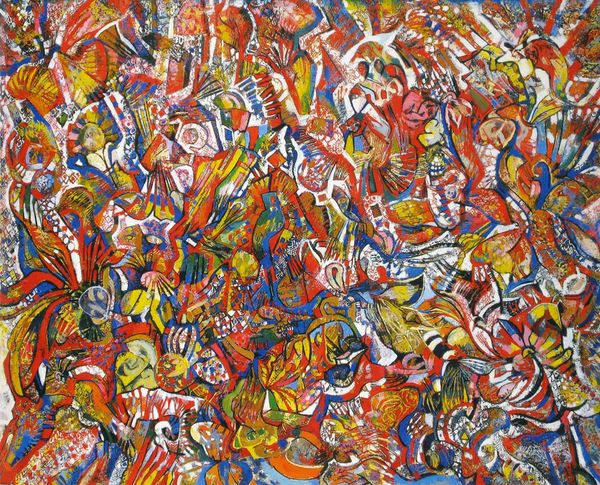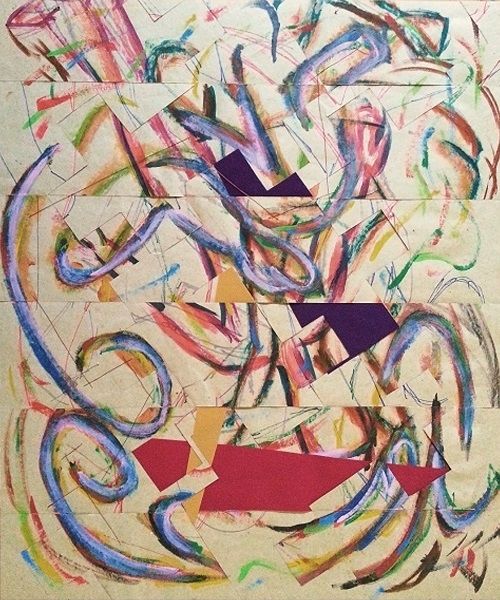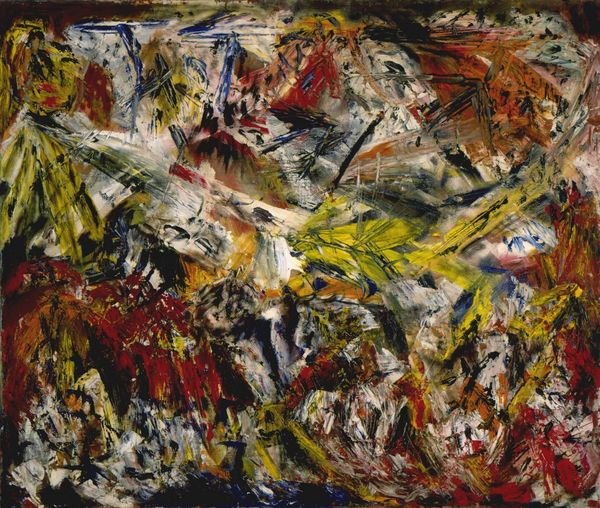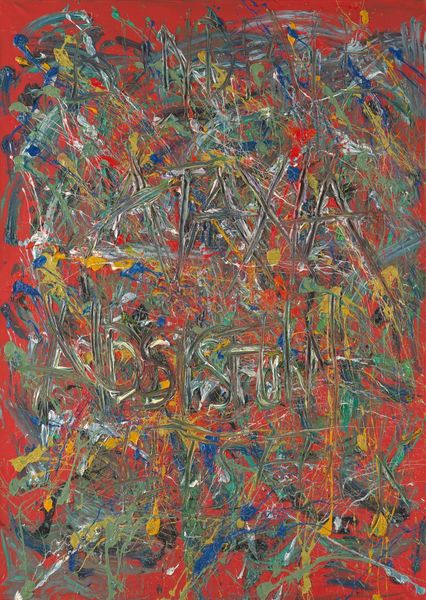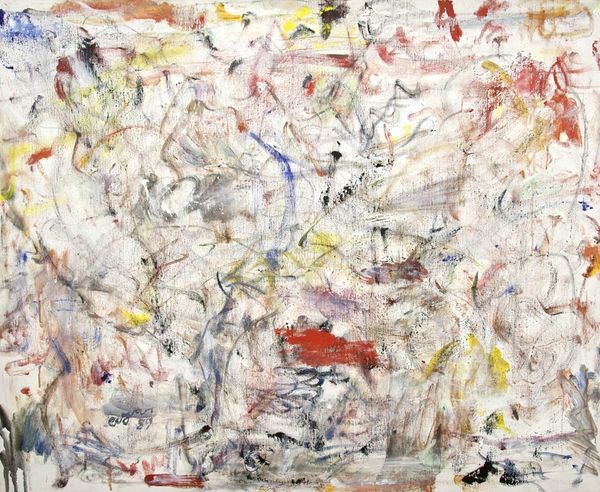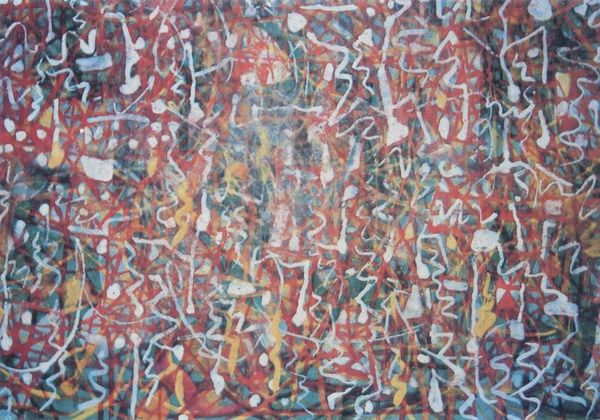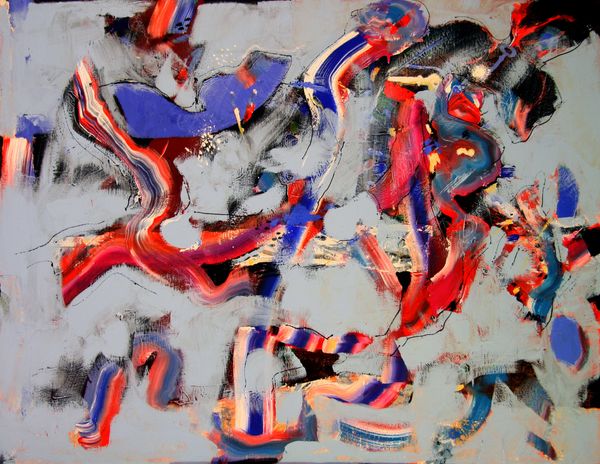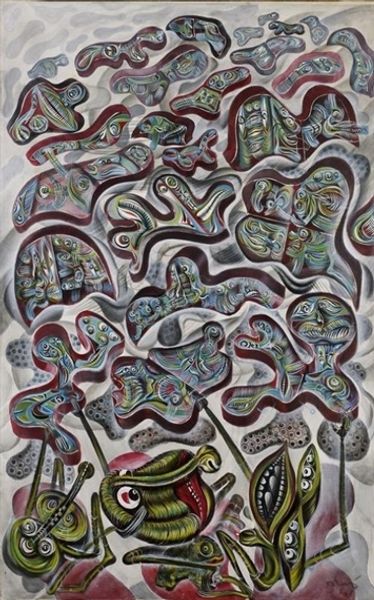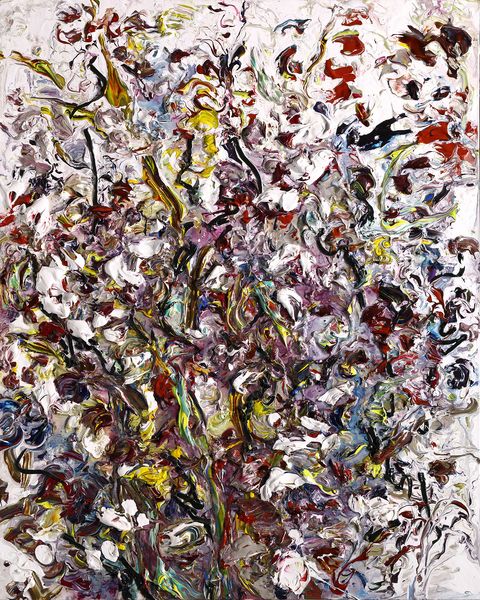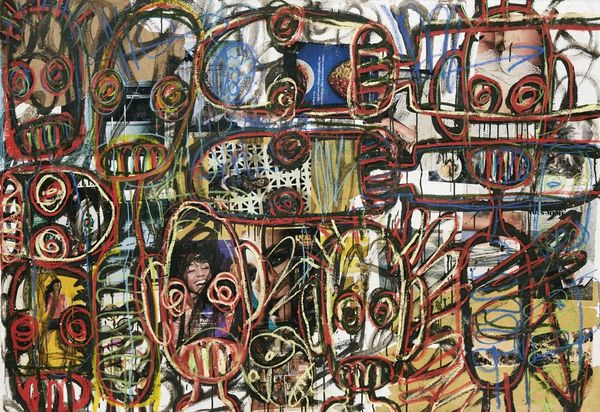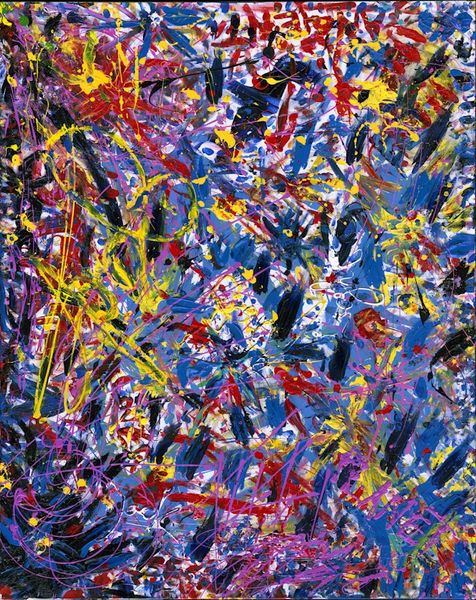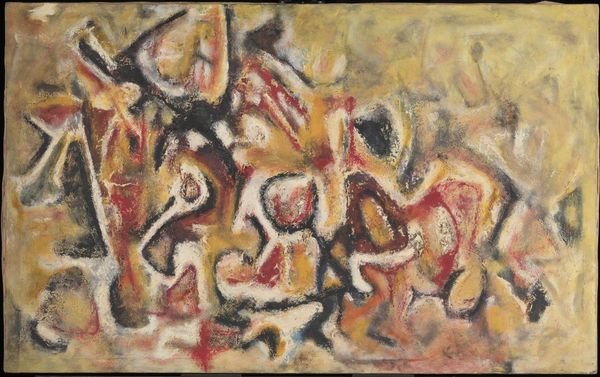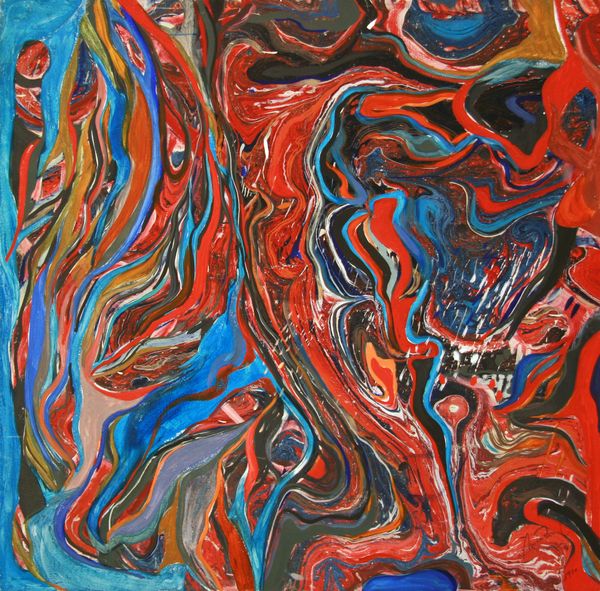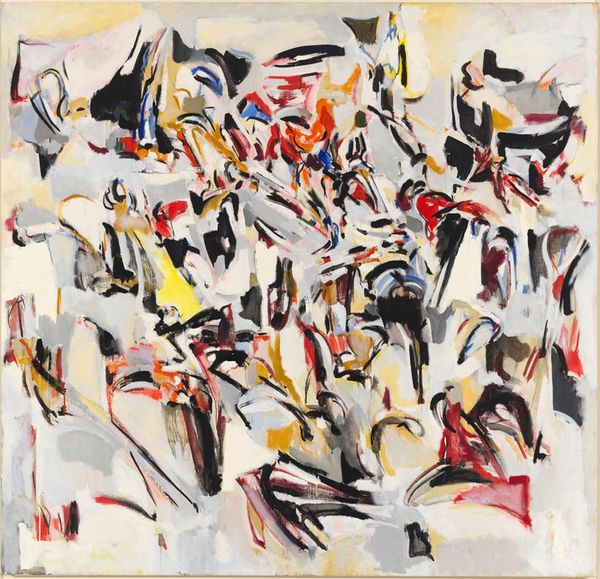
painting, acrylic-paint, impasto
#
abstract-expressionism
#
abstract expressionism
#
organic
#
abstract painting
#
painting
#
pattern
#
acrylic-paint
#
impasto
#
abstract pattern
#
organic pattern
#
abstraction
Dimensions: 55.2 x 67.9 cm
Copyright: Andre Masson,Fair Use
Editor: Here we have André Masson's "The Kill," painted in 1944. It's a riot of red and organic forms, executed with impasto and acrylic. It feels frantic, almost like a snapshot of pure, unadulterated chaos. What do you make of it? Curator: It's interesting you say "chaos," because what strikes me immediately is the *work* involved in producing such an image, particularly during wartime. The availability of materials – the pigments, the canvas – speaks to privilege, even in a state of global conflict. Editor: That's a good point. I hadn't considered the materials in that light. How does the wartime context play into the visual elements? Curator: Well, consider the "organic" forms you mentioned. Are they merely decorative, or are they allusions to bodies, to the carnage of war abstracted and flattened? Masson wasn’t actively fighting, but his labor was still a direct response to the war machine's demand and the resulting psychological turmoil. The painting itself is a kind of processed experience, mediated through the materiality of paint. How do you think this mediation affects the message? Editor: I see what you mean. By processing it through abstract forms, the horror is both present and somewhat distanced. It's less a depiction of war and more an expression *through* the act of making and using available materials. Curator: Precisely. It speaks to a specific moment of production, consumption, and artistic labor. Considering all the layers from canvas, to painting, to exhibition is like peeling back layers of the socio-economic and industrial realities that underpin all art. Editor: I never would have thought to analyze it that way. Curator: Every brushstroke, every color choice, embodies a web of material relationships. That, to me, is where the real power lies in a work like this.
Comments
No comments
Be the first to comment and join the conversation on the ultimate creative platform.
